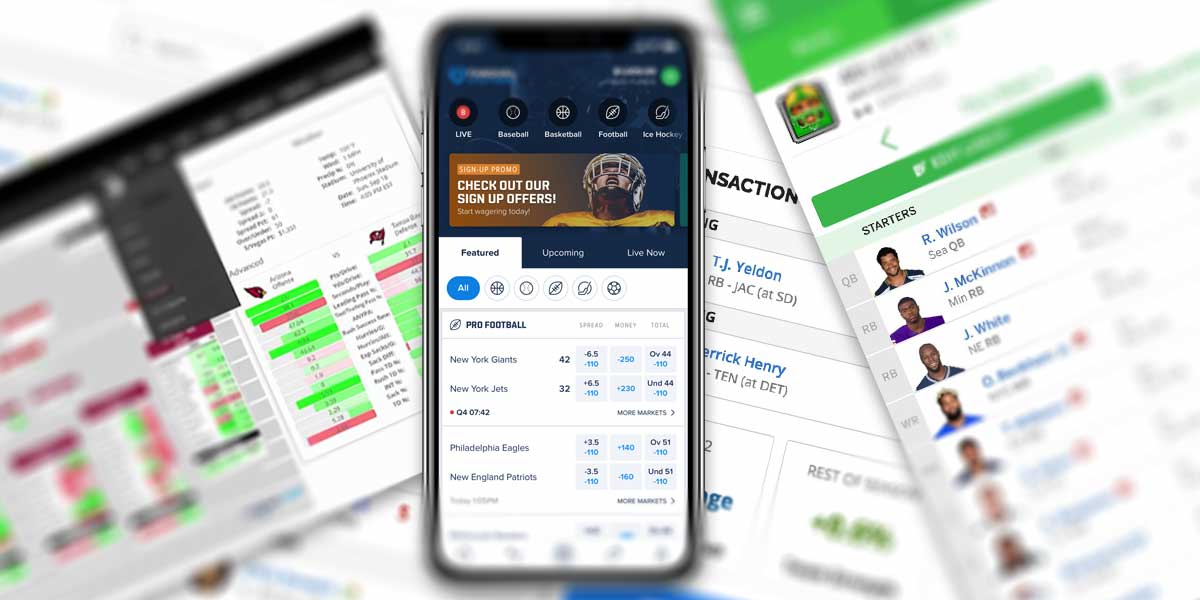- Understand that general football statistics don’t always equate to positive fantasy football teams.
- Look to dive deeper into the stats to figure out why a player is on the field and in what situation.
- If a player commonly gets his touchdowns stolen, or “poached”, look for an alternative athlete.
TALLAHASSEE, Fla. – Fantasy football brings out the best and worst in people. However, despite a team owner’s stance on certain players, there is always room for improvement.
Fantasy football leagues are spoiled with vast amounts of stats and information, but a majority of the league owners only look at overall points when deciding their roster and starting lineup. Just because a player is good in real life does not make them a good fantasy football player and just because a player is good in fantasy football does not make them a must-add on the team.
By diving deeper into the statistics presented, fantasy football can become much easier when looking at skill position players.
Targets and Volume Share
One of the most important stats to keep aware of is a player’s targets. When it comes to wide receivers, some can break off one play for 80 yards and a touchdown but that is all they do for the game. In fantasy football, owners won’t seem to mind when this production is presented, but relying on one catch to be successful can create more problems than help.
Take Demarcus Robinson and the Chiefs for example. Robinson has three receiving touchdowns – the same as Sammy Watkins. However, Robinson was able to collect two of those touchdowns in one game – Week 2 against the Oakland Raiders. With touchdowns catches of 44 and 39 yards, Robinson went off, making it seem like he is the top wideout in Kansas City.
However, by looking at the targets, it is much easier to see that Sammy Watkins is, in fact, the best wide receiver in Kansas City. Watkins has 20 more targets than Robinson through three games, ten more receptions, and almost 100 more yards.
Understanding the number of targets a player is expected to have for a game goes a long way in figuring out which wide receiver is the best fit in terms of consistency and season-long production. Chasing touchdowns is important, but adding a player on a fantasy roster because of one play can have a team post no points at that position the next week.
Touchdown Poachers
Many times, touchdowns are poached which leaves players who are the most skilled without a score to their name. It comes with every team – take Darren Waller for example. The tight end for the Oakland Raiders is all over the field, having caught 26 passes (1st among tight ends) for 267 yards (3rd amongst tight ends). However, he has zero touchdown receptions on the year.
Instead, Tyrell Williams has scored three touchdowns for his team – all that have come within the red zone. With receiving touchdowns of eight yards, four yards, and eleven yards, Williams is poaching many touchdowns that would help boost Waller’s points.
Advertising Disclosure
USAOnlineSportsbooks.com provides you with the most current information regarding sports betting and fantasy with the help of commissions we receive from links you may click on our site.
The touchdown poaching is more prevalent with running backs, however. As some backs drive the entire field, they find themselves being pulled to the sideline, only to have the touchdown poached and fantasy owners unhappy. Reading deeper into the stats can help fantasy football players understand a player’s utilization.
Take the San Francisco 49ers for example. In a Kyle Shanahan led offense, the running backs are interchangeable and used as a committee. Still, Matt Breida and Raheem Mostert are the “1a” and “1b” of the team, having rushed 41 and 34 times, respectively, compiling over 200 yards each. With an average above 5.5 yards per carry, many think these two are the fantasy football points leaders on the team.
However, with no touchdowns between them, they only have 20-22 points to their name on the season (excluding receiving stats). Instead, Jeff Wilson Jr. is the touchdown poacher in this situation. With only 18 carries on the year, he can often be overlooked, but it is his four rushing touchdowns that make him the best fantasy football player on the Niners’ roster.
Knowing a coach’s strategy and who they like to use in the red zone can play a vital role in increasing a fantasy football team’s points total every week.
Reason For Being On The Field
This section may seem like it is specialized to one position, but in actuality, every skill position player has different accolades. As the mention of targets was touched upon, knowing the number of snaps a player is on the field for can be important as well. But, also knowing their role for those snaps, is the second part of the game known as fantasy football.
Take O.J. Howard for example from the Tampa Bay Buccaneers. Howard has been on the field for 55%, 60%, and 58% of his team’s offensive plays through the Bucs’ three first games, respectively. These numbers make him one of the most played tight ends in the league, as he finished 10th, 6th, and 6th in tight end snap counts over his three games.
Still, despite being on the field for roughly 58% of all snaps, Howard is the 27th ranked tight end in fantasy football. With only nine targets on the year, it shows that his blocking is more valued than his receiving for the Tampa Bay Buccaneers.
Howard has caught seven of his nine targets, which shows he’s ready for any situation when his number is called, but with such a low target share, his value is in the dirt.
At the end of the day, USAOnlineSportsbooks.com knows anything can happen in fantasy football, so there is no exact science to follow when playing the game. Still, digging deeper into the information presented can allow for fantasy football team owners to make the best out of their season and accumulate more points or wins.

Anthony has been focused on sports and writing about them since he was a child. A lover of tennis and golf, Anthony spends most of his time fixated on every major tournament and the rumors surrounding the players. Born in Czechia, Anthony is always looking for fun places to travel that involve hiking mountains as well as unique restaurants.






